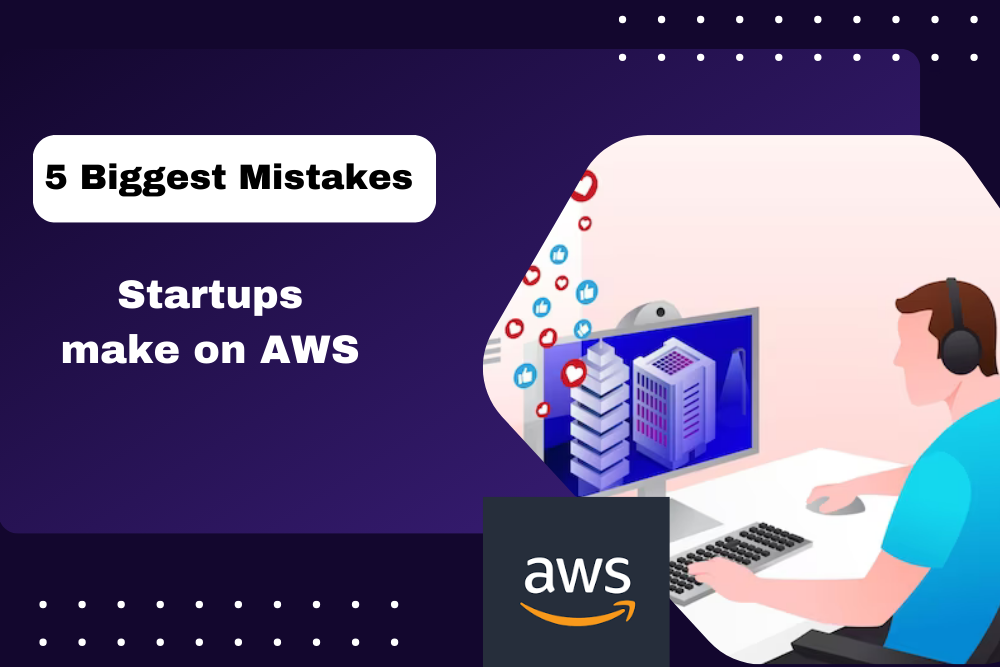In today’s fast-paced digital landscape, businesses are constantly seeking ways to innovate, scale, and remain competitive. Amazon Web Services (AWS) has positioned itself as a transformative force in the realm of cloud computing, furnishing an extensive spectrum of services and resources that empower organizations to reach new heights. Whether you’re a startup looking to minimize infrastructure costs or a global enterprise aiming to enhance your digital capabilities, AWS provides the tools and infrastructure to meet your unique needs.
This blog post is your gateway to understanding AWS, its significance in the technology landscape, and how it can transform the way you operate in the digital age. We’ll explore the core concepts, services, and use cases that make AWS a go-to platform for millions of businesses around the world. Whether you’re a seasoned IT professional looking to expand your cloud knowledge or a curious entrepreneur seeking to transform your business, we’re here to guide you through the vast AWS ecosystem.
What is Amazon Web Services?
Amazon Web Administrations (AWS) is a main distributed computing stage given by Amazon. It offers a wide cluster of on-request figuring assets and administrations, including virtual servers (EC2), stockpiling (S3), data sets, AI, examination, and then some. AWS empowers organizations and people to access, scale, and deal with their IT foundation and applications in an adaptable and financially savvy way. It dispenses with the requirement for forthright interests in actual equipment, giving a pay-more-only-as-costs-arise model that suits an extensive variety of purpose cases. AWS is known for its worldwide organization of server farms, permitting clients to convey applications and store information in areas around the world. Its comprehensive suite of tools and services has made it a popular choice for organizations seeking to innovate and optimize their digital operations in the cloud.
Want to make a career in Cloud Computing? Check our AWS online Training In Pune
Key Features of Amazon Web Services
Certainly, here are some key features of Amazon Web Services (AWS):
Compute:
Amazon EC2 (Elastic Compute Cloud): Delivers scalable virtual servers tailored to diverse application requirements.
AWS Lambda: Offers serverless computing for running code without managing servers.
AWS Elastic Beanstalk: Streamlines application deployment and administration for greater ease.
Storage:
Amazon S3 (Simple Storage Service): Scalable and durable object storage for files, data, and backups.
Amazon EBS (Elastic Block Store): Block storage volumes optimized for EC2 instances.
Amazon Glacier: Long-term archiving and backup storage.
Databases:
Amazon RDS (Relational Database Service): Professionally managed relational database service supporting a range of database engines.
Amazon DynamoDB: A fully supervised NoSQL database service.
Amazon Redshift: A data warehousing solution tailored for analytics needs.
Networking:
Amazon VPC (Virtual Private Cloud): Isolated network environments for secure cloud computing.
Amazon Route 53: Scalable DNS web service for domain management.
AWS Direct Connect: A dedicated network link to AWS data centers for direct connectivity.
Security and Identity:
AWS Identity and Access Management (IAM): Centralized authority over user access to AWS resources for streamlined control.
AWS WAF (Web Application Firewall): Shields web applications against prevalent web vulnerabilities.
Amazon Cognito: User identity and access control for applications.
Master the skills from Industry experts. Learn more at AWS With DevOps Certification Course
Top 5 Mistakes Made with Amazon Web Services
Effectively leveraging Amazon Web Services (AWS) necessitates meticulous preparation and adherence to optimal methodologies. Here are the top five common mistakes made with AWS:
Mistake 1: Inadequate Security Configuration
A crucial error in Amazon Web Services (AWS) usage is inadequate security configuration. Neglecting proper security measures, such as misconfiguring access controls, leaving unnecessary ports open, or lacking strong encryption, can leave AWS resources vulnerable to breaches. This mistake can result in unauthorized access, data exposure, and potentially catastrophic security breaches. To avoid this, adhere to AWS security best practices, regularly audit configurations, enforce strong access control policies, enable encryption, and utilize multi-factor authentication. Vigilant security practices are paramount in maintaining the integrity of your AWS infrastructure.
Mistake 2: Overlooking Cost Management
Failing to proactively manage costs within Amazon Web Services (AWS) is a significant blunder. Without vigilant cost control, businesses risk overspending on cloud resources. This mistake commonly occurs when users neglect to leverage AWS’s budgeting and optimization tools. To mitigate this issue, it’s crucial to monitor resource consumption, use AWS Cost Explorer to analyze spending patterns, implement cost allocation tags, and employ autoscaling to optimize resource usage. Overlooking cost management can lead to budget overruns and financial inefficiencies, undermining the cost-effective benefits of AWS By prioritizing cost optimization, enterprises can maximize their AWS investments to the fullest extent.
Experience the Power of Cloud Computing. Enroll now for AWS Cloud Practitioner Training
Mistake 3: Neglecting Data Backups
Failing to establish robust data backup strategies within Amazon Web Services (AWS) is a critical error. Inadequate backup measures leave businesses vulnerable to data loss, potentially resulting from accidental deletions, system failures, or security breaches. Neglecting data backups can have severe consequences, including the inability to recover critical information. To rectify this mistake, implement automated backup solutions, use AWS services like Amazon S3 versioning and cross-region replication, and regularly test the data recovery process. Neglecting data backups is a risky oversight that can lead to irreversible data loss, making it essential to prioritize data protection within your AWS environment.
Mistake 4: Ignoring Resource Cleanup
Neglecting to regularly clean up and de-provision unused or unnecessary resources in Amazon Web Services (AWS) is a common oversight. This mistake can lead to increased costs, as organizations continue to pay for idle or redundant resources. To rectify this error, establish a resource cleanup routine, utilize AWS services like AWS Config to monitor resource usage, and implement lifecycle policies for objects in Amazon S3 and Amazon Glacier to automate data deletion. Ignoring resource cleanup not only results in financial waste but can also impact system performance and security, making it essential to maintain a well-organized and efficient AWS environment.
Mistake 5: Not Monitoring and Logging
Failing to set up proper monitoring and logging within Amazon Web Services (AWS) is a significant error. Inadequate monitoring can result in undetected issues, performance bottlenecks, or security breaches, as you won’t have real-time visibility into your infrastructure. To mitigate this mistake, implement AWS CloudWatch and CloudTrail for monitoring, logging, and auditing. Set up alarms and alerts to respond to anomalies promptly and maintain detailed logs for security and compliance purposes. Neglecting monitoring and logging compromises your ability to proactively manage your AWS resources and can lead to delayed issue resolution and security risks. Monitoring and logging play a vital role in upholding the well-being, efficiency, and safety of your AWS environment.
Conclusion
In conclusion, avoiding common mistakes in Amazon Web Services (AWS) is essential for optimizing your cloud infrastructure’s security, cost-efficiency, and performance. These five mistakes—inadequate security configuration, overlooking cost management, neglecting data backups, ignoring resource cleanup, and not monitoring and logging—can have detrimental consequences for your AWS environment.
To learn more visit AWS Training in Pune
By prioritizing security best practices, implementing robust cost management strategies, establishing data backup and recovery plans, routinely cleaning up resources, and proactively monitoring and logging system activities, organizations can harness the full potential of AWS while mitigating risks. AWS offers a wealth of tools and resources to help users avoid these mistakes, empowering them to build and maintain secure, efficient, and reliable cloud environments. Ultimately, mastering AWS best practices is crucial for achieving success in the world of cloud computing.




